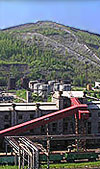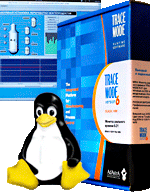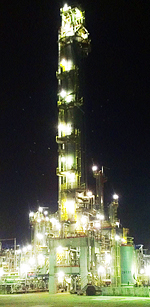  A new laboratory practice on Supervisory control and Data Acquisition (SCADA) and Human Machine Interface (HMI) system development is launched for undergraduate students of Electrical Engineering at University of Engineering and Technology, Taxila (Punjab, Pakistan). University of Engineering and Technology, Taxila commonly referred to as UET Taxila is among the best engineering universities in Pakistan. The new practice is based on the TRACE MODE SCADA/HMI software. A new laboratory practice on Supervisory control and Data Acquisition (SCADA) and Human Machine Interface (HMI) system development is launched for undergraduate students of Electrical Engineering at University of Engineering and Technology, Taxila (Punjab, Pakistan). University of Engineering and Technology, Taxila commonly referred to as UET Taxila is among the best engineering universities in Pakistan. The new practice is based on the TRACE MODE SCADA/HMI software.
The laboratory work was developed by Director Technical, Creative Electronics & Automation in his MSc Research work under the supervision of Prof. Dr. Muhammad Ahmad Choudhry using the Omron's latest CJ1 Programmable Logic Controller (PLC), the Device-Net field bus and the latest version of TRACE MODE 6 SCADA/HMI software. The whole model is made in a very easy manner so that student can understand it with limited prerequisites.
As Electrical Engineering students are more acquainted to the Parameters used in Power industry, so the experiments are developed using these familiar parameters. However, it is not limited to this approach. Another concern of the author was to use all the 10 PLC workstations and provide idea of the field-bus systems in which Device-Net usage is explained. Most of the institutions have limited licensed versions of the software. The author has used Basic Version of Trace Mode-6 Free integrated SCADA/HMI-SOFTLOGIC-MES-EAM-HRM development environment for 64000 I/O points (available free for downloads). It includes full set of editors and a profiler Runtime (for 1 hour of continuous operation in real time), history logger and alarm server, Auto building, Built-in drivers and ODBC/OPC/DDE support. For each experiment, Flow chart, Ladder code and Ladder description is provided in detail which have made students very convenient to fully understand the project and can make change in the  ladder code to modify the experiments. ladder code to modify the experiments.
The laboratory experiments proved to be great success in developing understanding of SCADA for undergraduate students. All the steps for setting up the hardware, software installation and PLC programming are explained in detail. The research includes development of complete step-by-step guide to implement SCADA. The students can very easily follow the guidelines and can perform the experiments and moreover can produce their own experiments within no time using the same or different approach.
The new laboratory practice is not limited to experiments for Power industry; students can develop SCADA for process controls, batch processes, robotics, mechatronics etc. The free TRACE MODE SCADA development software and limited runtime version can be distributed among the students, who can learn and develop Human Machine interfaces and logics as well as perform limited 1 hour simulation by using Virtual simulators which will make system run like as it is connected to the real time hardware to test their results on any PC. This can act as the standard tool for learning SCADA as well as PLC programming as per IEC 1131-3 standards.
The author can share the experiments the files of SCADA as well as PLC and complete Experimentation & Training documentation if required by any user. Please contact the author on crest@dsl.net.pk .
|










 A new laboratory practice on Supervisory control and Data Acquisition (SCADA) and Human Machine Interface (HMI) system development is launched for undergraduate students of Electrical Engineering at University of Engineering and Technology, Taxila (Punjab, Pakistan). University of Engineering and Technology, Taxila commonly referred to as UET Taxila is among the best engineering universities in Pakistan. The new practice is based on the TRACE MODE SCADA/HMI software.
A new laboratory practice on Supervisory control and Data Acquisition (SCADA) and Human Machine Interface (HMI) system development is launched for undergraduate students of Electrical Engineering at University of Engineering and Technology, Taxila (Punjab, Pakistan). University of Engineering and Technology, Taxila commonly referred to as UET Taxila is among the best engineering universities in Pakistan. The new practice is based on the TRACE MODE SCADA/HMI software.  ladder code to modify the experiments.
ladder code to modify the experiments. AdAstra Research Group (Moscow, Russia) has released a new version of the free TRACE MODE SCADA/HMI driver for the OMRON programmable logical controller. The new driver is built in the TRACE MODE SCADA/HMI 6.09 release and above.
AdAstra Research Group (Moscow, Russia) has released a new version of the free TRACE MODE SCADA/HMI driver for the OMRON programmable logical controller. The new driver is built in the TRACE MODE SCADA/HMI 6.09 release and above. 
 Antcorp System Sdn Bhd, (Penang, Malaysia), has completed development of the waste water treatment system at the Sewerage Plant (Malaysia). This plant is the biggest in the north area of the country.
Antcorp System Sdn Bhd, (Penang, Malaysia), has completed development of the waste water treatment system at the Sewerage Plant (Malaysia). This plant is the biggest in the north area of the country. The new TRACE MODE 5 based project was implemented by the specialists of Kola nuclear power plant (Murmansk Region) in atomoc industry. It is the second case of the TRACE MODE launching at nuclear power plants.
The new TRACE MODE 5 based project was implemented by the specialists of Kola nuclear power plant (Murmansk Region) in atomoc industry. It is the second case of the TRACE MODE launching at nuclear power plants.

 The Ho Chi Minh City based (Viet Nam) Duc Phong Technology and Automation Corporation (DPTA) has the status of AdAstrA Authorized Dealer. The corporatin
The Ho Chi Minh City based (Viet Nam) Duc Phong Technology and Automation Corporation (DPTA) has the status of AdAstrA Authorized Dealer. The corporatin  TECHNOLOGY CORPORATION AND GERMAN STYLE AUTO was established in 2006, with a team of professionals, engineers, management staff are formally trained, motivated and experienced customers always trust.
TECHNOLOGY CORPORATION AND GERMAN STYLE AUTO was established in 2006, with a team of professionals, engineers, management staff are formally trained, motivated and experienced customers always trust. A Riga city based Sia Rameda company (Riga , Latvia) has used russian made TRACE MODE SCADA/HMI software to develop a control system for ventilation, heating and cooling equipment in the RD Holding commercial and office center in Riga (street Maskavas 240, Riga , Latvia).
A Riga city based Sia Rameda company (Riga , Latvia) has used russian made TRACE MODE SCADA/HMI software to develop a control system for ventilation, heating and cooling equipment in the RD Holding commercial and office center in Riga (street Maskavas 240, Riga , Latvia). Learn how to connect a Mitsubishi Melsec FX3U PLC to TRACE MODE SCADA/HMI through built-in driver with our new free online video training.
Learn how to connect a Mitsubishi Melsec FX3U PLC to TRACE MODE SCADA/HMI through built-in driver with our new free online video training.
 A Belgorod based AIT company (South of Russia) has successfully used TRACE MODE SCADA/HMI software to develop and to implement a batch control system for manufacturing of fodder additives. The control system has been installed in facility of TeknoFeed (Tshebekino, Belgorod area, Russia).
A Belgorod based AIT company (South of Russia) has successfully used TRACE MODE SCADA/HMI software to develop and to implement a batch control system for manufacturing of fodder additives. The control system has been installed in facility of TeknoFeed (Tshebekino, Belgorod area, Russia). 
 AdAstra Company (Russia) announced the release of real-time monitor (LinRTM) for the operating system Linux.
AdAstra Company (Russia) announced the release of real-time monitor (LinRTM) for the operating system Linux.  In Bosnia, the Bosanski Brod refinery launched a second production line, which was repaired by the Russian company Zarubezhneft. Now the plant is able to produce the gasoline conforming to the Euro 5 standard.
In Bosnia, the Bosanski Brod refinery launched a second production line, which was repaired by the Russian company Zarubezhneft. Now the plant is able to produce the gasoline conforming to the Euro 5 standard.  The Iron–Technik company (Ust -Kamenogorsk, Kazakhstan), an AdAstra authorized system integrator, has launched into commercial operation an automation system for municipal public utility named "Oskemen" (Ust -Kamenogorsk, Kazakhstan ).
The Iron–Technik company (Ust -Kamenogorsk, Kazakhstan), an AdAstra authorized system integrator, has launched into commercial operation an automation system for municipal public utility named "Oskemen" (Ust -Kamenogorsk, Kazakhstan ).




















